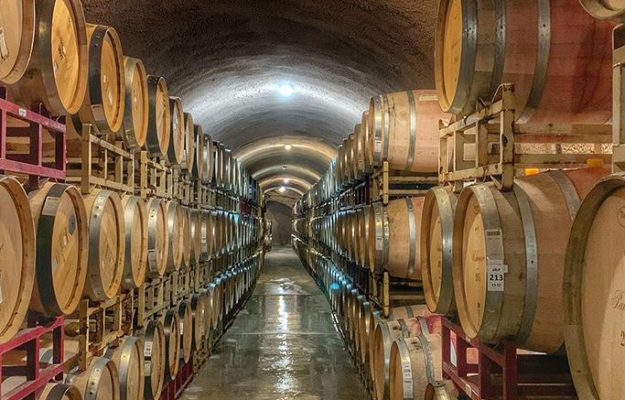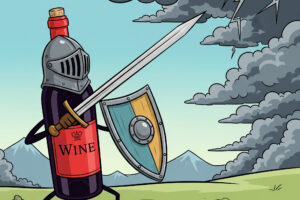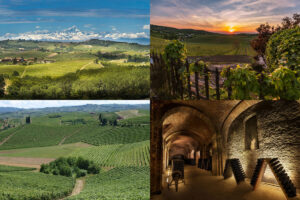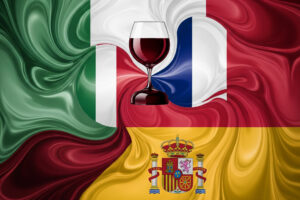All in all, wine producers can cope with market fluctuations, reductions or increases in orders or consumption, even through great sacrifice and a myriad of difficulties. Especially when we’re talking about long aging wines, which have economic cycles and market types perhaps not too closely linked to short-term contingencies on the market. The reason is that the wine that cannot be sold today, at least in some cases, can be sold tomorrow. Loss of the product is what creates permanent and irreparable damage, whether it occurs in the vineyard, due to reasons related to the weather, or in one of the many stages of processing distribution that turns a bunch of grapes into a bottle of wine, and then goes on the table. There is insurance coverage, of course, but most of it is based on average values, referring more to the grape from which a given wine is produced, rather than to the wine itself. Now, in a context that goes beyond the Covid-19 emergency, the wine production relationship is becoming more and more important. There are increasingly advanced tools, and those who will insure the value of the bottle, not the values established by third parties, but the price list established by the wine company. Assiteca, the largest Italian insurance broker and consulting company on integrated management of corporate risks, and over 20 years of experience in the sector, has created the program “Le vie della vite” (the roads of the vine) which provides for insuring the product.
“This is not a generic insurance product adapted to wine production, but rather a program designed specifically for wineries, whose needs and risks we know well after years of insuring”, Emanuele Parri of Assiteca explained to WineNews. He emphasized an important aspect, “today all wineries have insurance on goods, but very few insure the product. The reason is that often the value acknowledged in the event of damage related to loss of the product, is quite different from what the company would obtain by selling the product. Now, however, the value established by the company is precisely what is insured, configured in three phases: vegetative, that is, in the vineyard; winemaking, that is, in the wine cellar, and distribution.
We acknowledge the price of the company’s price list, the value of each individual wine, agreed upon between us and the company, and therefore, no third party interventions, net of costs incurred. It is clear that if the loss of the product occurs in the vineyard, due to a hailstorm, for instance, the producer will not bear the costs of harvesting and production. In other words, the value of the bottle from the price list is defined together with the wine company, and together, the percentage of the value is fixed in relation to the processing and production phase in which it is found when unfortunately any damage occurs”. This is a very interesting aspect, especially for high quality productions. As a matter of fact, Assiteca said there are several leading names among their partner wineries, especially from Tuscany, such as Cecchi, Frescobaldi, Tenuta Argentiera, Masseto, Ornellaia, Badia a Coltibuono and Villa Calcinaia.
“On wines aged for a long time such as reserves, and so their prices will be listed only after the years it will take before they exit on the market”, Parri pointed out, “we take reference values; that is, the average prices of vintages of that wine or of that denomination judged to have the same quality level as those of the wine in question, such as, for instance, the ratings expressed in stars and so on, but in any case, on well-defined values. And there are other features. For instance, we also pay the difference in bottle-value in case of wine downgrading, if this occurs in certain conditions. We also cover the distribution phase, including stock with third parties, for instance, in the event of flooding, fires or even those events that alter the quality of the product. Further, we cover transportation, both “inter company”, i.e., from one sector to another of the same company, and also between different companies”.
We have to be very careful because, as we said, there are many phases, starting from the vineyard up to the finished bottle. “Wineries usually suffer the heaviest and most intense economic damage when a critical event occurs in the vineyard, such as a hailstorm that causes loss of production. However, due to the incidence of damages, in our experience, the most complicated phase is winemaking, or in any case in the cellar. Many things can happen - you can overturn a trolley or a box while taking the grapes to the cellar, or a fermentation block because the temperature control system accidentally does not work, or you can break a shelf holding bottles or barrels, just to give some examples. There are many small problems that can generate recurrent damages, more than a large monetary amount”.
Copyright © 2000/2025
Contatti: info@winenews.it
Seguici anche su Twitter: @WineNewsIt
Seguici anche su Facebook: @winenewsit
Questo articolo è tratto dall'archivio di WineNews - Tutti i diritti riservati - Copyright © 2000/2025








































































































































































































